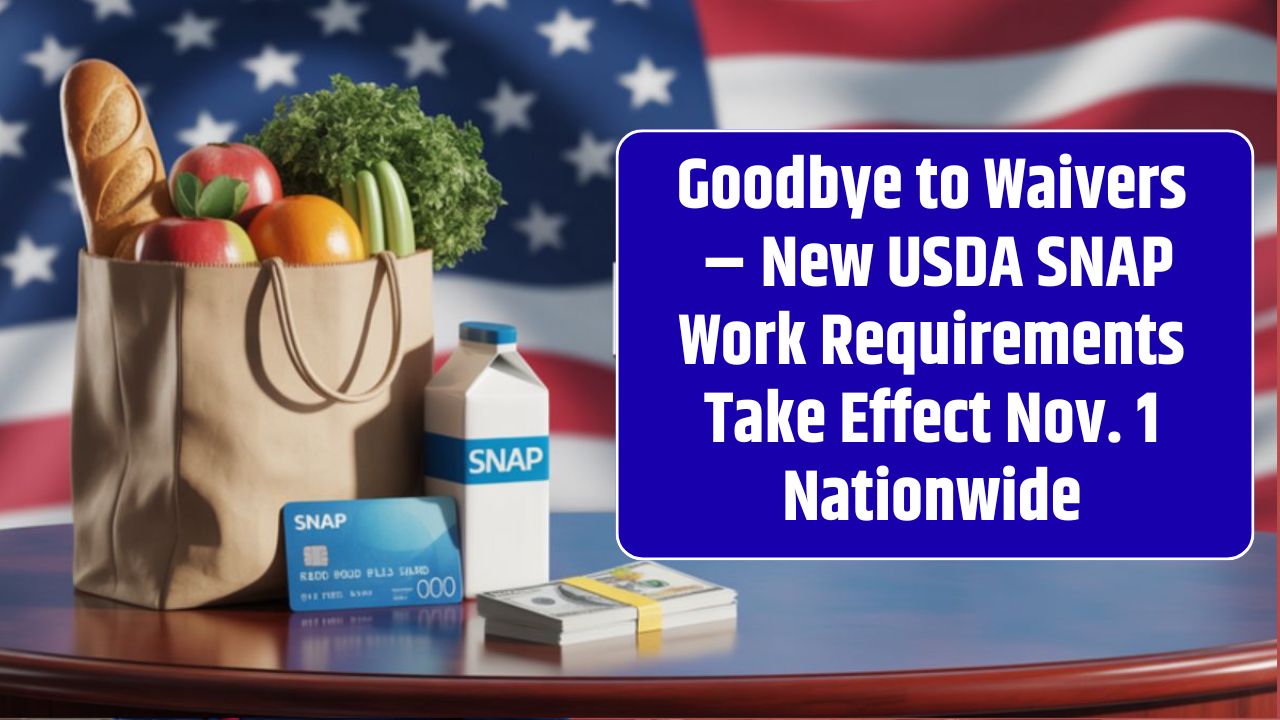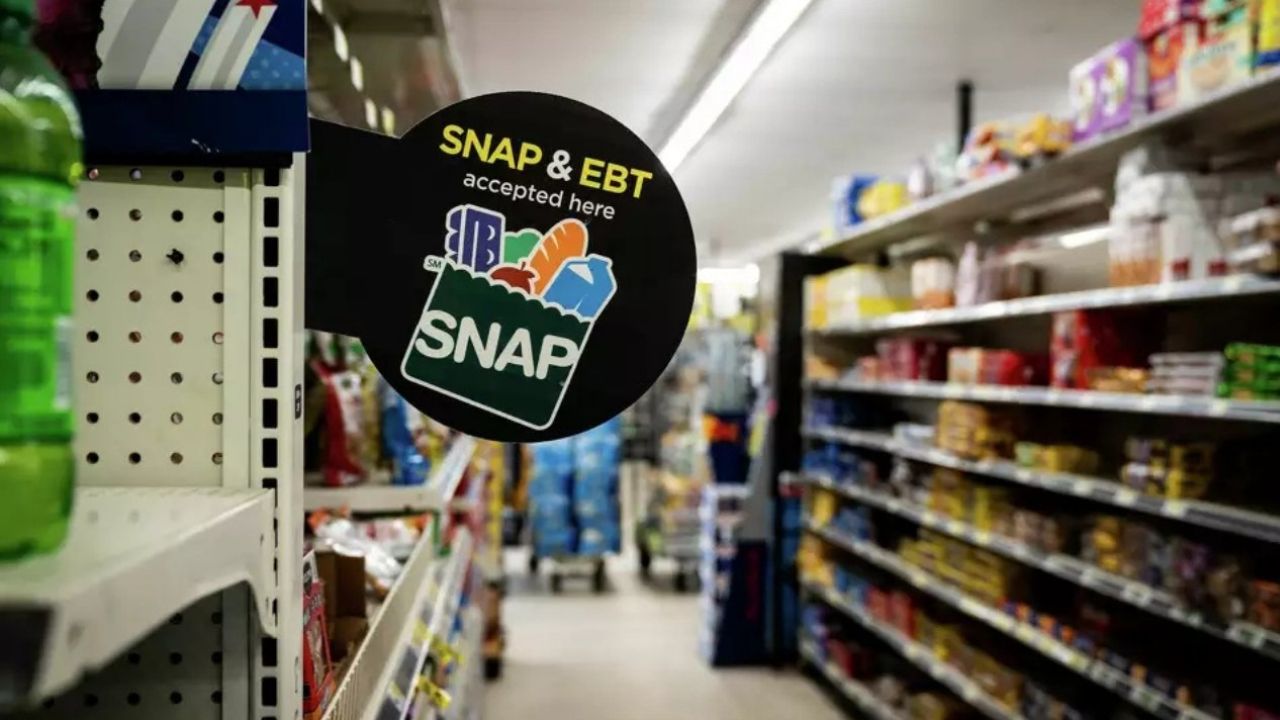Next Saturday, November 1, 2025, is going to sting for millions of Americans who rely on food assistance. The country’s largest anti-hunger program—SNAP, or the Supplemental Nutrition Assistance Program—is entering a new chapter that many are calling the toughest in decades. The rules are changing, and for a large slice of recipients, that means one thing: work or lose your benefits.
It’s not a drill. It’s policy.
And it’s rolling out nationwide in just days.
The New SNAP Era: Tougher Rules, Smaller Safety Net
Starting November 1, the U.S. Department of Agriculture (USDA) will enforce sweeping revisions to how SNAP operates for able-bodied adults without dependents (ABAWDs). These are individuals aged 18–64 who don’t have children or other dependents and are considered capable of working.
The new rule flips the script: to keep getting monthly food benefits, you now need to work, train, or volunteer for at least 80 hours per month—about 20 hours a week. Miss that mark, and your benefits will cut off after three months within any three-year period.
That’s right—no job, no benefits.
| New SNAP Work Rules (Effective Nov. 1, 2025) | Details |
|---|---|
| Who’s Affected | Able-Bodied Adults Without Dependents (ABAWDs) |
| Work Requirement | 80 hours per month (≈ 20 hours per week) |
| Verification | Documentation of job, training, or community service |
| Non-Compliance Penalty | Benefits limited to 3 months in a 3-year period |
| Age Range Affected | Expanded from 18–54 to 18–64 |
| Parent Exemption | Now only for parents of children under 14 |
| Implementation Date | November 1, 2025 |
| Authority | U.S. Department of Agriculture (USDA) |
| Official Info | USDA SNAP Rules |
Why It’s Happening
SNAP, which currently serves around 42 million Americans, was designed as a temporary safety net for those struggling to afford food. But policymakers argue it’s drifted too far from that goal. After years of pandemic-era expansions and emergency allotments, the cost of SNAP ballooned past $100 billion annually, according to reports from the Government Accountability Office (GAO).
“There’s no money left in the coffers,” one budget analyst in D.C. told me bluntly. Congress has made it clear: trimming costs and “restoring accountability” are now the priorities.
To many lawmakers, tightening eligibility and enforcing work requirements isn’t punishment—it’s a return to discipline. But to millions of low-income workers juggling unstable hours or caregiving responsibilities, it feels more like a penalty for being poor.
The 3-Month Rule Returns—With Teeth
The 3-month limit isn’t new. It’s been on the books for decades. What’s different now is how strictly it’ll be applied.
Until now, states could request waivers from the work rule if local unemployment was high or job opportunities were scarce. After November 1, those waivers are being phased out almost entirely. The federal government wants uniform enforcement—no more patchwork exemptions.
That means whether you live in Detroit or rural Arkansas, you’ll need to document your work or training hours monthly. Forget to submit your proof one month? Benefits stop.
The USDA says the goal is to connect people with job training programs that lead to stable employment, not just temporary compliance. You can meet the rule by:
- Working or self-employment (80+ hours per month)
- Volunteering with a registered nonprofit or community program
- Participating in a SNAP Employment & Training program
- Joining a “workfare” program where you perform community service in exchange for benefits
All of it must be verifiable. Paperwork matters as much as effort now.
Older Americans and Parents Hit Hardest
The most controversial shift is the expanded age range. Previously, only adults 18 to 54 were subject to work rules. Now, that limit stretches to 64—pulling millions of near-retirement Americans into the fold.
For older recipients in poor health or living in regions with limited job opportunities, this change could be devastating. Critics warn it amounts to asking near-seniors to hustle for survival.
Parents, too, are losing ground. Before, any parent with a child under 18 was exempt from the work rule. Now, that cutoff drops to under 14. If your youngest is 14 or older, you’re back in the ABAWD category—and expected to log those 80 hours.
As one advocacy group put it, “We’re telling single moms with teenagers to get a job or go hungry.”
Vulnerable Populations Lose Protections
Perhaps most jarring, the new rules also eliminate several exemptions that once shielded the most vulnerable. Veterans, the homeless, and young adults who recently aged out of foster care will no longer be automatically exempt from work requirements.
Advocates say this will disproportionately harm people already struggling with housing instability, trauma, or mental health issues. According to the Center on Budget and Policy Priorities (CBPP), the loss of these exemptions could push hundreds of thousands into deeper food insecurity.
Supporters of the reform argue otherwise. “Everyone deserves dignity through work,” said one USDA official defending the policy. “We’re not taking food away; we’re encouraging participation.”
That’s the official line. But in communities where unemployment hovers around double digits, “participation” isn’t the problem—opportunity is.
What Recipients Should Do Now
If you’re currently receiving SNAP and fall within the new ABAWD definition, the most important thing you can do is get your documentation ready. The USDA recommends the following:
- Verify your work hours with pay stubs or employer letters.
- Enroll in approved training programs through your state SNAP office.
- Track volunteer hours with a supervisor’s signature.
- Report changes immediately—don’t wait until you lose benefits to appeal.
State agencies will start issuing notices explaining the new process in the coming weeks. You can find your state’s SNAP contact list on the USDA’s official portal.
The Political Split
As with most things in Washington, this reform has split opinions straight down the aisle. Republicans tout it as fiscal responsibility and fairness to taxpayers. Democrats warn it’s austerity disguised as efficiency.
What’s less debatable is its impact: fewer people will qualify, and many who remain will face tighter reporting requirements. In the short term, grocery budgets will shrink for millions. In the long term, whether that leads to more jobs—or more hunger—remains to be seen.
The truth, as always, is messier than either side admits.
FAQs:
Who is affected by the November 1, 2025 SNAP rule changes?
Able-bodied adults aged 18–64 without dependents (ABAWDs) must meet new work or training requirements to stay eligible.
How many hours do I need to work to qualify?
You must work, volunteer, or attend training for at least 80 hours per month (around 20 hours weekly).
What happens if I don’t meet the requirement?
You’ll only receive SNAP benefits for three months in any three-year period unless you meet the work rule.













